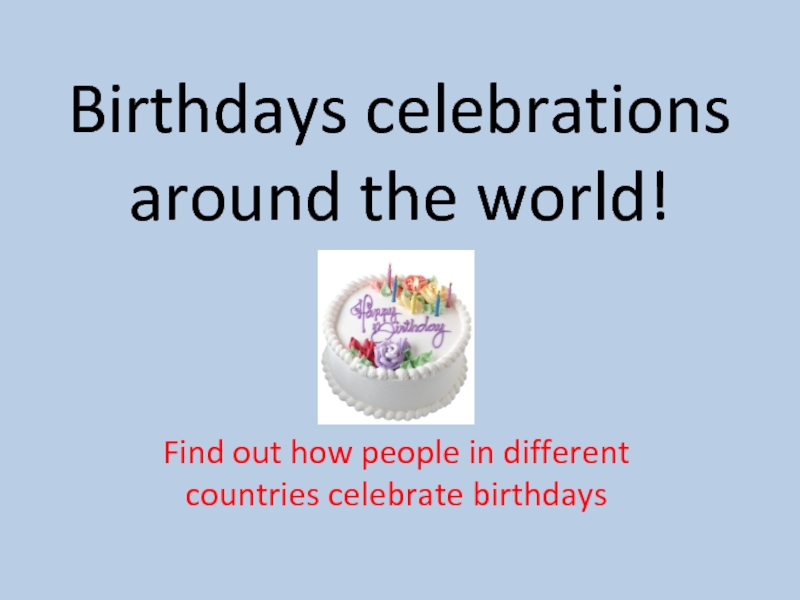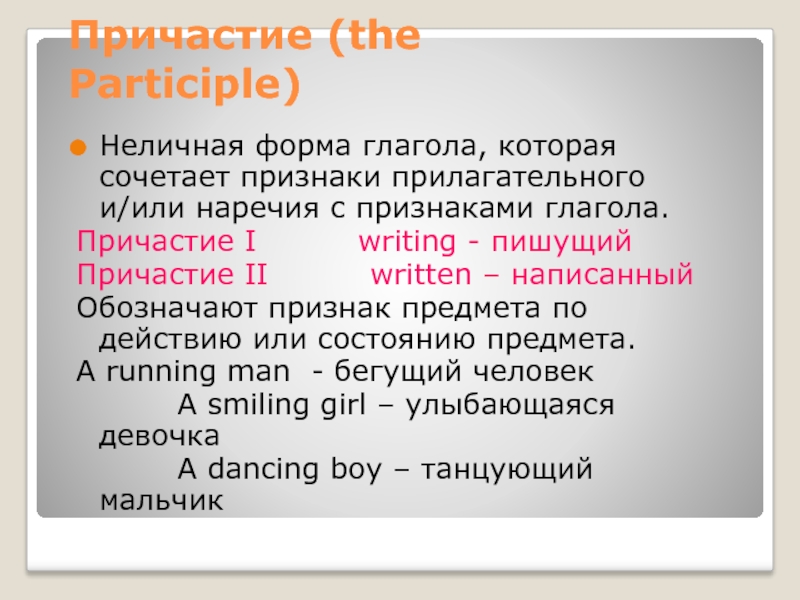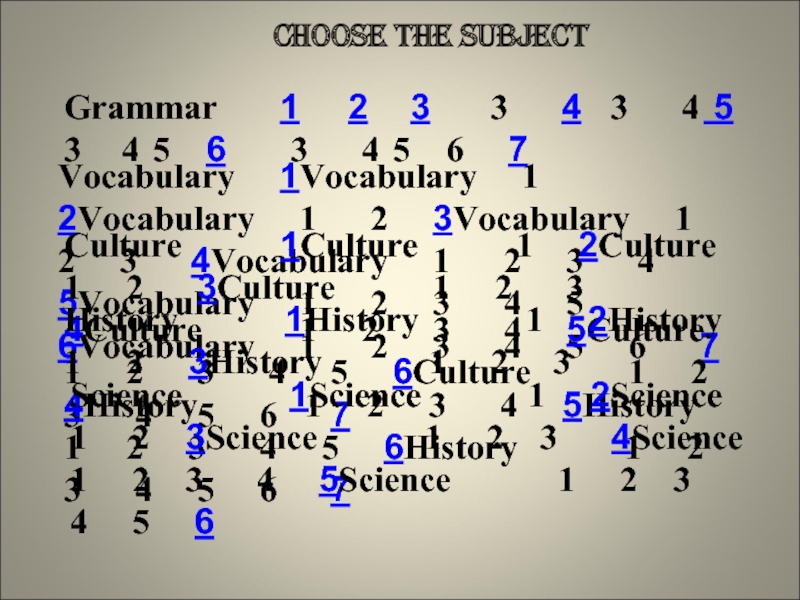- Главная
- Разное
- Дизайн
- Бизнес и предпринимательство
- Аналитика
- Образование
- Развлечения
- Красота и здоровье
- Финансы
- Государство
- Путешествия
- Спорт
- Недвижимость
- Армия
- Графика
- Культурология
- Еда и кулинария
- Лингвистика
- Английский язык
- Астрономия
- Алгебра
- Биология
- География
- Детские презентации
- Информатика
- История
- Литература
- Маркетинг
- Математика
- Медицина
- Менеджмент
- Музыка
- МХК
- Немецкий язык
- ОБЖ
- Обществознание
- Окружающий мир
- Педагогика
- Русский язык
- Технология
- Физика
- Философия
- Химия
- Шаблоны, картинки для презентаций
- Экология
- Экономика
- Юриспруденция
Discourse and culture презентация
Содержание
- 1. Discourse and culture
- 2. 1)WHAT IS LANGUAGE? 2)WHAT IS A LANGUAGE?
- 3. WHAT IS DISCOURSE? Origin: The English
- 4. WHAT IS CULTURE? Origin: The English
- 5. LANGUAGE VS CULTURE Most people agree that
- 6. RELATIONSHIP BETWEEN LANGUAGE AND CULTURE The language
- 7. Deborah Schiffrin “Approaches to Discourse” (1994) singles
- 8. THE ETHNOGRAPHY OF COMMUNICATION (1) The most
- 9. THE ETHNOGRAPHY OF COMMUNICATION (2) The
- 10. TWO FURTHER APPROACHES TO STUDYING THE CULTURAL
- 11. To explain discourse phenomena in cultural terms,
- 12. The metalanguage of lexical universals can
- 13. DISCOURSE STYLES: (1) JAPANESE 1)One of the
- 14. DISCOURSE STYLES: (2) MALAY 1)One of the
- 15. DISCOURSE STYLES: (3) POLISH 1) One of
- 16. Routines are a good place to begin
- 17. Like English ‘jokes’, however, kawaty are intended
- 18. IMPORTANCE OF LEARNING CULTURE BESIDES FOREIGN LANGUAGE
- 19. REFERENCES: Albert, E.M. (1986[1972]) ‘Culture patterning of
Слайд 21)WHAT IS LANGUAGE?
2)WHAT IS A LANGUAGE?
Origin: The English word “language” is
Слайд 3WHAT IS DISCOURSE?
Origin: The English word “discourse” is derived from
Слайд 4WHAT IS CULTURE?
Origin: The English word “culture” is derived from
Слайд 5LANGUAGE VS CULTURE
Most people agree that language and culture are tightly
Слайд 6RELATIONSHIP BETWEEN LANGUAGE AND CULTURE
The language expresses facts, ideas or events
Слайд 7Deborah Schiffrin “Approaches to Discourse”
(1994) singles out 6 major approaches to
discourse:
the speech act approach;
interactional sociolinguistics;
the ethnography of communication;
pragmatic approach;
conversation analysis;
variationist approach.
APPROACHES TO DISCOURSE
Слайд 8THE ETHNOGRAPHY OF COMMUNICATION (1)
The most influential approach to discourse and
DELL HYMES
(June 7,1927-Novamber 13,2009
Слайд 9THE ETHNOGRAPHY OF COMMUNICATION (2)
The way we communicate depends a
Finnish people: the hardest nation for communication, quiet and serious?
Turkish people: very talkative and friendly?
Ethnography investigates
speaker culture.
Слайд 10TWO FURTHER APPROACHES TO STUDYING THE CULTURAL ASPECTS OF DISCOURSE ARE
LINGUISTIC ANTHROPOLOGY
Linguistic anthropology is conducted within the discipline of anthropology. It is directed toward understanding how language use fits in with, and indeed helps to constitute, the larger culture. This work often looks at cultural practices in superb detail, as for instance, in the works in Watson-Gegeo and White (1990) on conflict resolution in the Pacific, or those in Schieffelin and Ochs (1986) on socialization strategies.
INTERCULTURAL COMMUNICATION STUDIES
Intercultural studies and cultural commentaries (for example, Mitzutani and Mitzutani, 1987) usually focus on national-level societies such as Japan or China, comparing them with mainstream Anglo-American culture. Often the motivation is a desire to reduce culturally based misunderstandings in business or international relations.
Слайд 11To explain discourse phenomena in cultural terms, however, the crucial components
Слайд 12 The metalanguage of lexical universals can be used not only for
CULTURAL SCRIPTS
Слайд 13DISCOURSE STYLES: (1) JAPANESE
1)One of the aspects of Japanese discourse style
Слайд 14DISCOURSE STYLES: (2) MALAY
1)One of the aspects of Malay discourse is
Слайд 15DISCOURSE STYLES: (3) POLISH
1) One of the aspects of Polish discourse
Слайд 16Routines are a good place to begin a study of cultural
ROUTINES AND GENRES
Слайд 17Like English ‘jokes’, however, kawaty are intended to promote pleasant togetherness,the
GENRES: Kawaty/Podanie
Слайд 18IMPORTANCE OF LEARNING CULTURE BESIDES FOREIGN LANGUAGE
1)For communication with foreign people
2)For
Слайд 19REFERENCES: Albert, E.M. (1986[1972]) ‘Culture patterning of speech behavior in Burundi’, in
(1994) Goddard, Cliff and Anna Wierzbicka, 1997. Discourse and Culture.

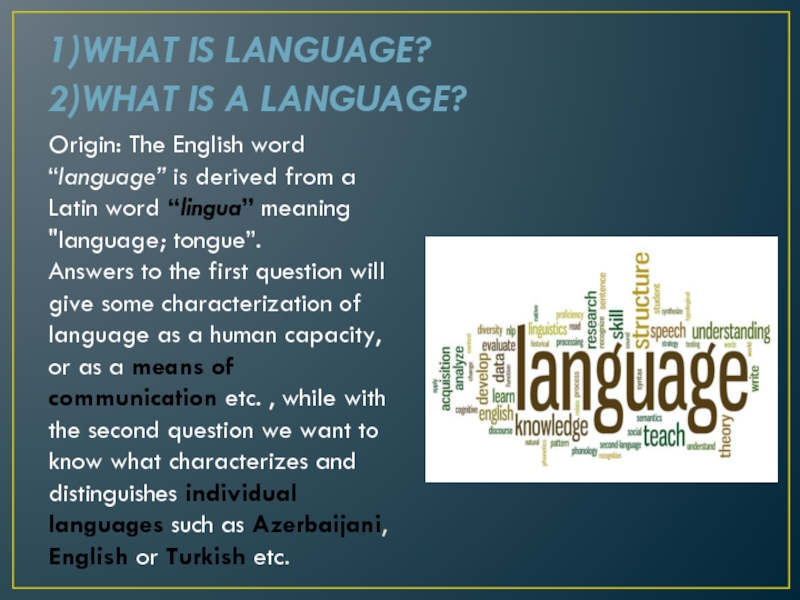

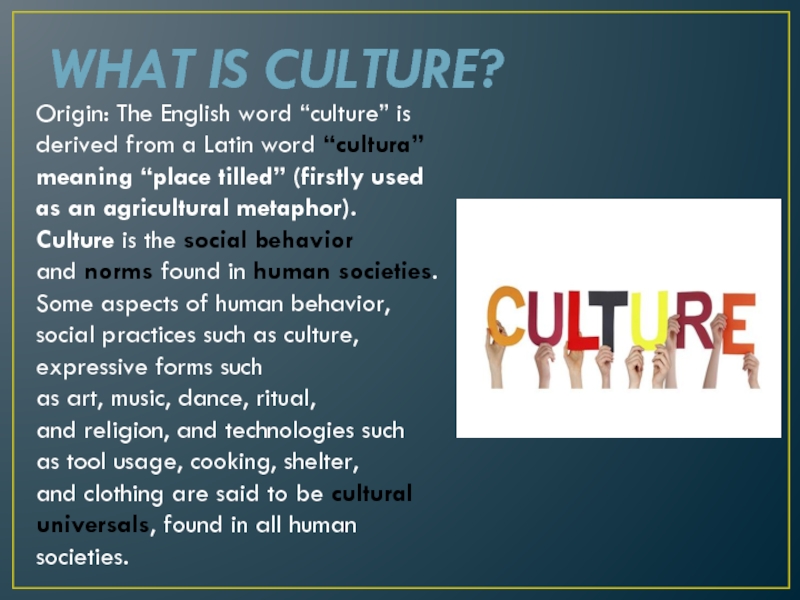
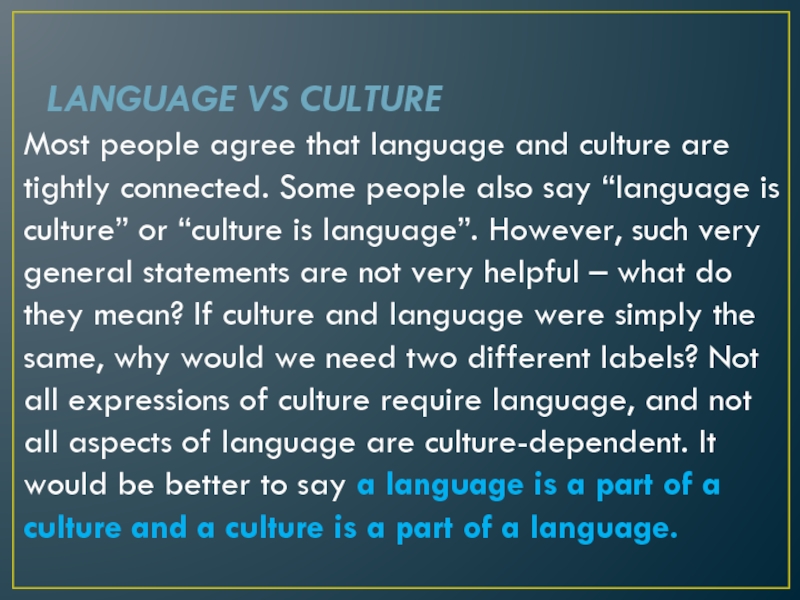
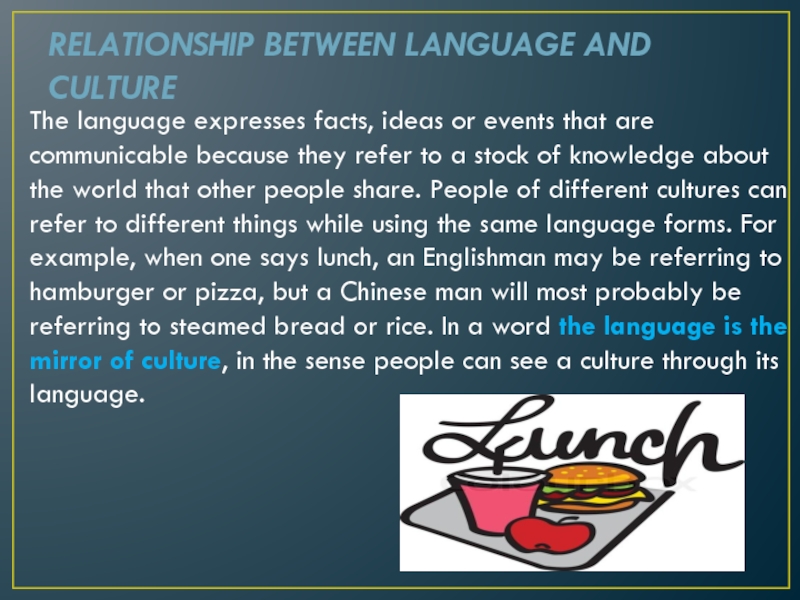
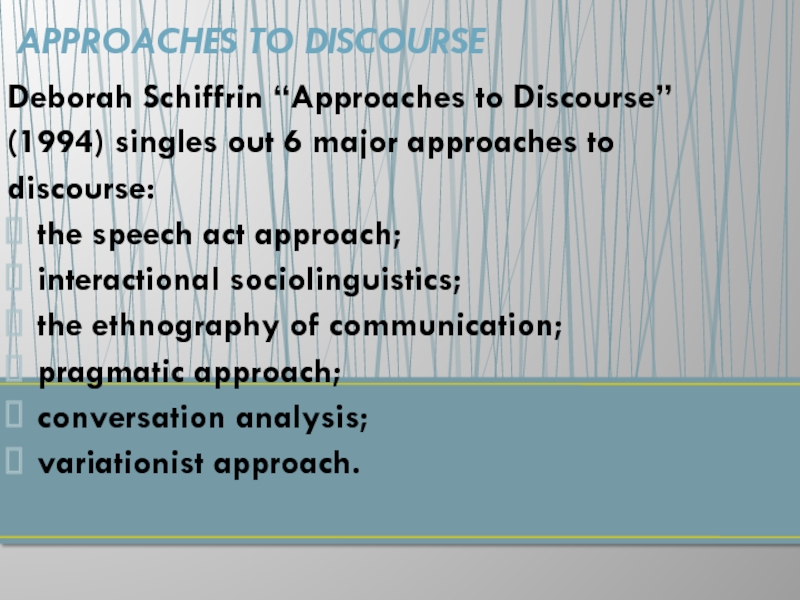
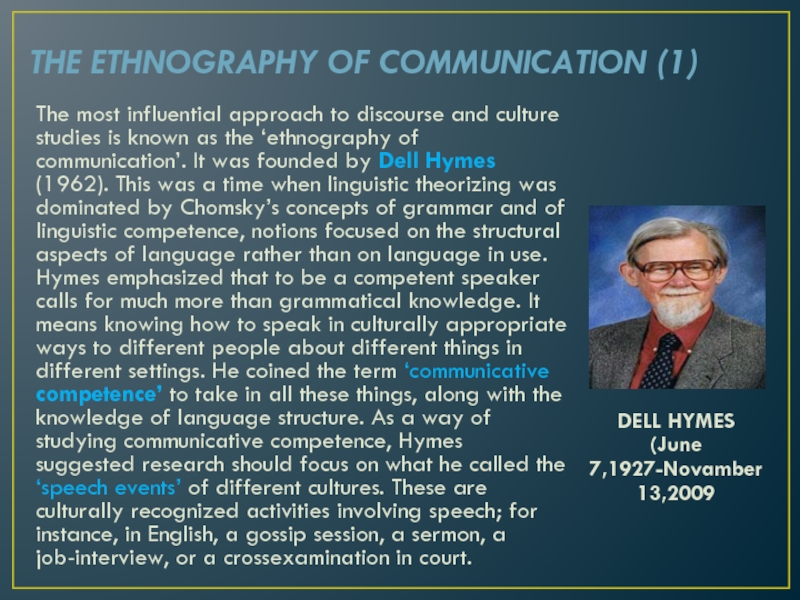
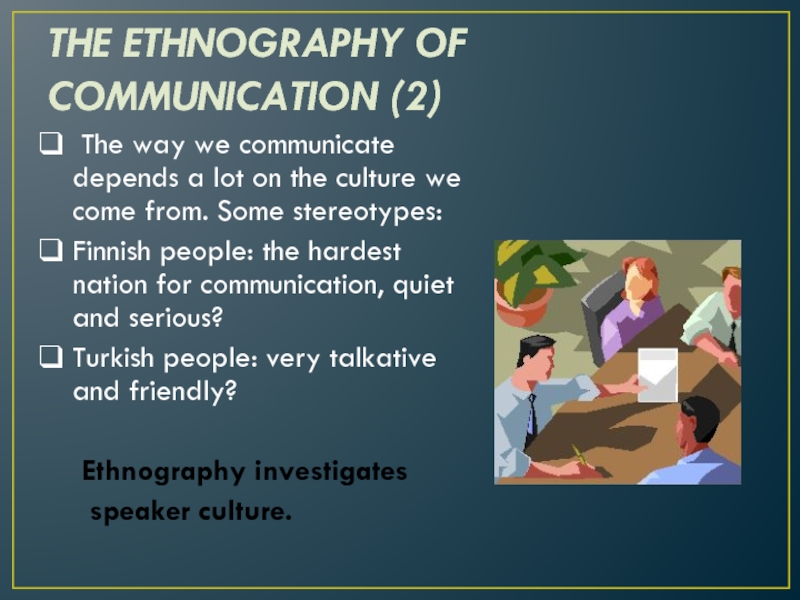
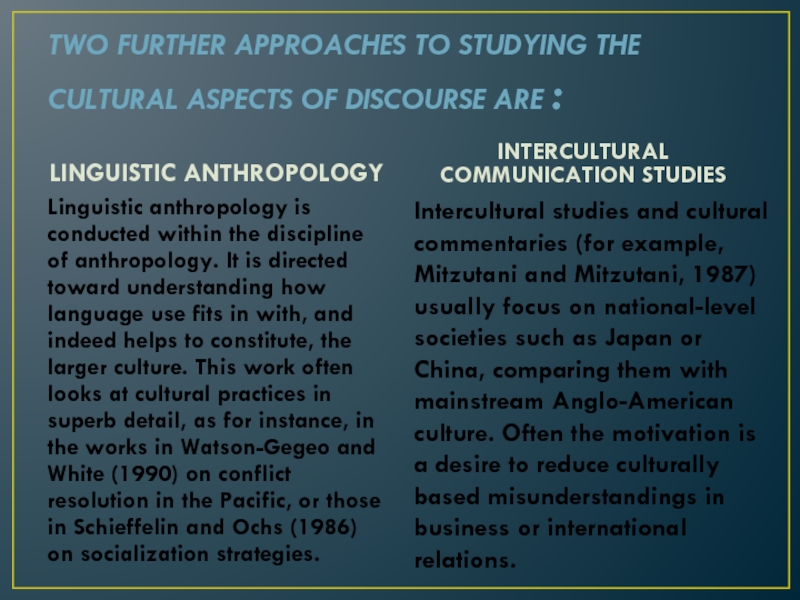

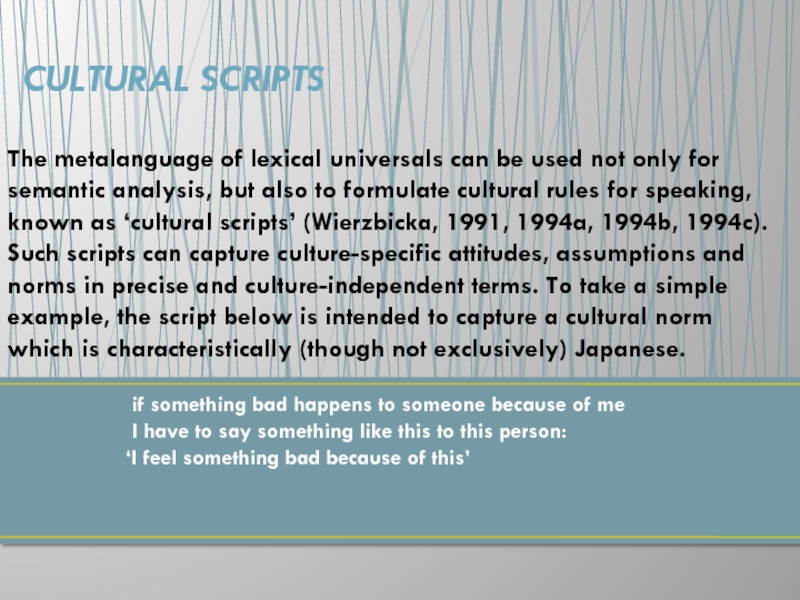
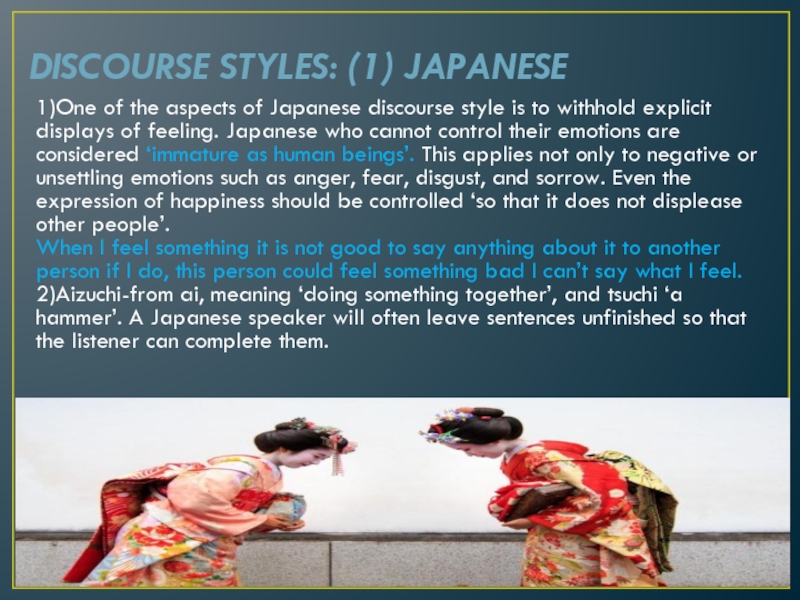
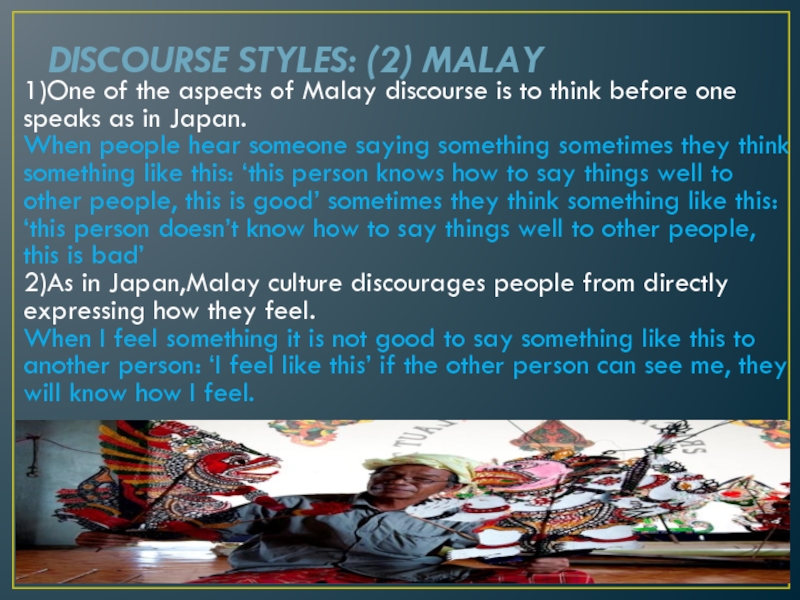
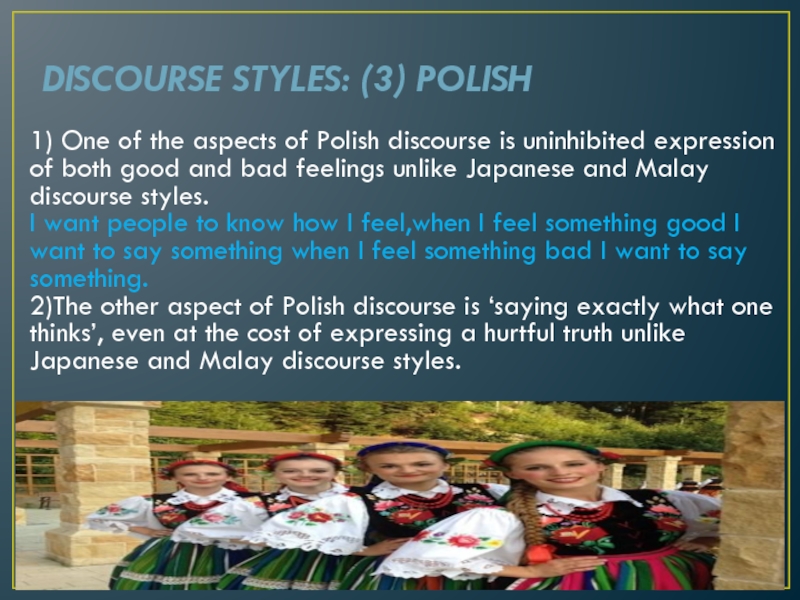
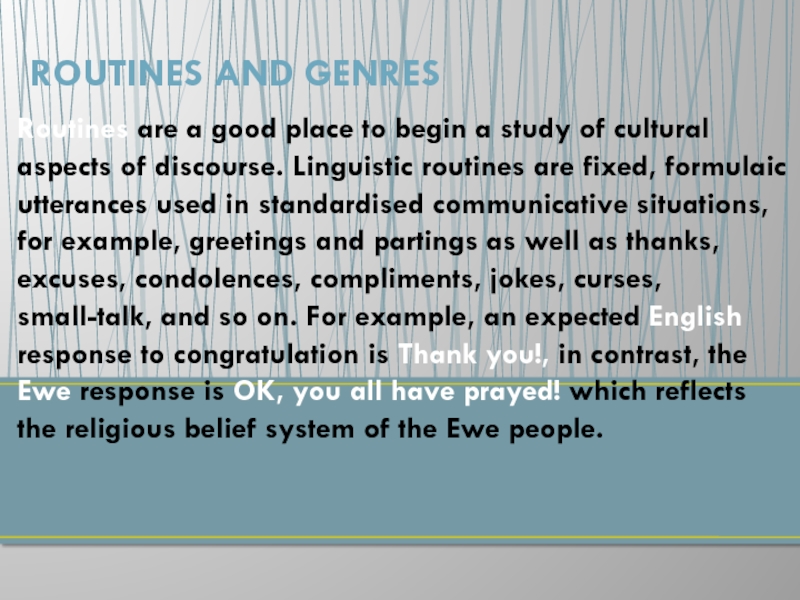
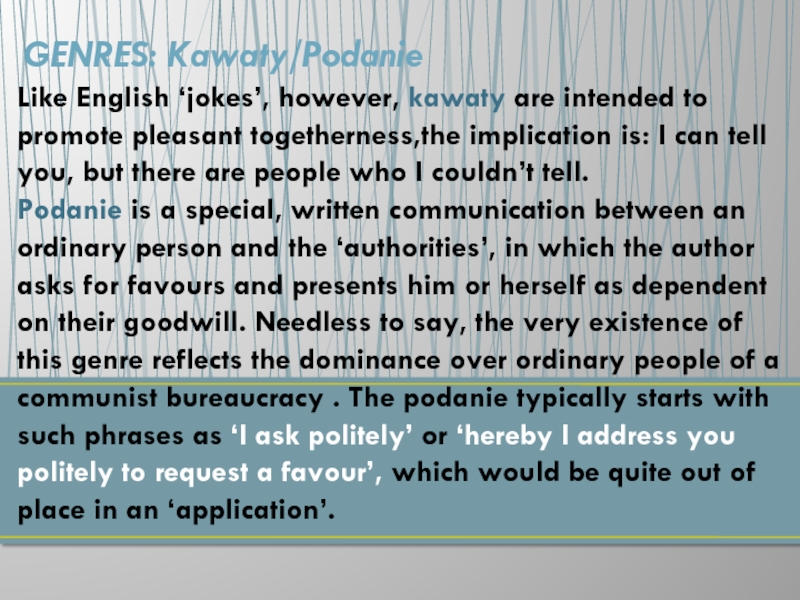

![REFERENCES: Albert, E.M. (1986[1972]) ‘Culture patterning of speech behavior in Burundi’, in J. J. Gumperz](/img/tmb/5/491425/0138a44bcea5d8f432f563983c0ccaea-800x.jpg)

